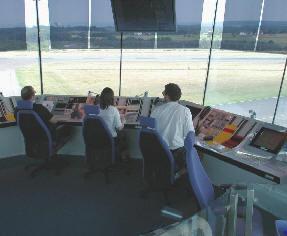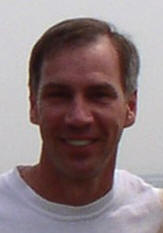 |
|
Lamb: Do
you think I can help him or what’s the situation?
Evans:
He’s gunna have to land here pretty soon…We better get him on
radar contact, for if we lose radar contact we’ll know where
he’s at.
With no
direction finding equipment in the area, Evans quickly used his
ATC knowledge and experience to choose the best option for the
current situation and elected to hand him off to the facility
with radar coverage in the area,
Anchorage
Center. Faced
with an aircraft now unable to establish consistent
communication due to its low altitude, Lamb was forced to relay
all information through N7516K, a nearby Piper Cub
coincidentally piloted by a friend of the distressed pilot.
Using his 18 years of controller experience, plus his own
familiarity with a Cessna aircraft, Lamb was able to
successfully assist Schikora in locating a narrow dirt trail
which would offer the only safe landing surface within the area.
“I don’t
have a transponder but I can go ahead and land next to him on
Nome Creek Trail and see if I can help him,” N7516K offered
eagerly in hopes of assisting his friend.
Lamb,
aware that Schikora had since brought his aircraft to a safe
stop on Nome Creek Trail, now set in to assist this second
aircraft in its effort to locate the downed plane’s position.
“Advise
your intentions of position on this frequency, call for overhead
aircraft because I won’t be able to hear you,” instructed Lamb.
“Let us know that everything’s good otherwise we’re gunna send
rescue.” From the moment Lamb began work on Dec. 20 until the
very end, he provided attentive, above and beyond assistance to
the aircrafts involved. Beginning his shift with initiative, he
asked another facility what he could do to help.
While
using all resources available, he made sure that other aircraft
in the area were monitoring the situation and, after notified of
a safe landing, followed up with numerous questions to the pilot
of N7516K regarding any rescue assistance needed on the ground.
Lamb took extra precautionary measures throughout the entirety
of this situation – a situation in which he knew time was
imperative as exposure to the extreme temperatures in the
Alaskan area could rapidly become an issue had the pilot not be
picked up.
The teamwork,
attention to detail and calmness under pressure displayed here by Lamb
and Evans are true examples of what our ATC system is all about. Through
their decisive actions they collectively helped create a happy ending to
what could have been a tragic story.
|
Richard Todd Lamb
Anchorage Center (ZAN)
|
|
| |
|
 |
|
|
Mike Evans Fairbanks AFSS |
|
Alaskan Region RVP Larry
Lescanec:
“I was just really
fortunate,” Schikora told Fairbanks Daily News Miner
last December. "So many things went right. I call it an early Christmas
present.” Lamb and Evans call it just another day at work. On the afternoon
of Dec. 20, 2009, Alaskan members Todd Lamb and Michael Evans took
immediate control of an in-flight emergency to ensure a successful
aircraft landing and pilot rescue in a remote section of the Alaskan
wilderness. As the first in
contact with the emergency aircraft, Evans relied on his ATC training
and experience to choose the best option for the current situation. He
elected to hand off the aircraft from Fairbanks AFSS to a facility with
RADAR coverage in the area, Anchorage Center.
“Over at ZAN, Lamb
had begun work just like any other day. He walked in, hung up his coat,
reported to the control room, and then, beginning with his first
transmission of his day, provided exceptional assistance to two pilots
involved in a life-threatening situation. He utilized all the resources
available – other pilots, Fairbanks Approach, Fairbanks AFSS, RADAR and
GSP – to provide a safe landing in which he followed up with numerous
questions regarding any assistance needed on the ground. Evans and Lamb
demonstrated the teamwork, calmness under pressure, and decision-making
that exemplify the highest level of performance in the ATC profession.
They helped create a happy ending to what could have been a tragic
story.”
| |
|
|
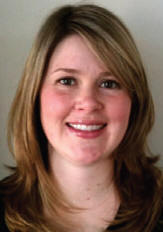 |
|
Central
Region
Recording
Audio 1
You
already know about the “Miracle on the Hudson” event. But there
was another terrifying collision between birds and an Airbus
last year that didn’t get as much attention. While the aircraft
involved – Frontier Airlines Flight 820, an Airbus 319 –
maintained the use of one engine, the encounter was no less
frightening to the 124 passengers onboard. And the safe airborne
handling and emergency landing were also dramatic and memorable
as an extraordinary example of professionalism took place both
in the cockpit and in the control tower at
Kansas City
International
Airport.
That’s
where controller Jessica Hermsdorfer, an Air Force veteran and
now a CPC at MCI for the past two years, was working departure
radar all combined up in the tower cab in the early part of a
Saturday evening.
Frontier
820 departed for Denver at approximately 7 p.m. local time on
Nov. 14 and checked in on the departure frequency normally with
Hermsdorfer.
FRONTIER
820: Departure, good evening, Frontier 820 is two point five,
climbing one-zero thousand.
HERMSDORFER: Frontier 820, Kansas City Departure, radar contact.
Turn left heading two-five-zero, join the Salina transition. Climb and maintain one-five
thousand.
|
Jessica
Hermsdorfer
Kansas City Tower TRACON (MCI) |
|
Hermsdorfer had
two arrivals on the east downwind that she was also working when,
suddenly, Frontier 820’s climb was abruptly interrupted. It was a severe
bird strike, occurring at about 4,000 feet.
“Mayday, mayday,
Frontier eight twenty. Multiple bird strikes. Number two engine is
having problems. We’re going to immediately return back to
Kansas City.”
The aircraft
suffered extensive damage.
Both engines were struck and one caught fire, losing power. Hermsdorfer
quickly but calmly sprang into action. “I turned the aircraft to a 180
degree heading for downwind,” she said. “I had another aircraft that was
based for final approach, but then changed my mind and turned him out
given the severity of the situation and I wanted to give Frontier a
clean final.”
HERMSDORFER: OK,
Frontier eight twenty, expect Runway One Left and I’ll get you in as
soon as possible. Expect the ILS.
FRONTIER 820:
Thank you. Yeah, we’ve got severe damage number two engine, possible one
engine as well.
HERMSDORFER: OK,
number two and number one. And then what else do you need?
FRONTIER 820: Uh,
that’s it. Equipment standing by.
Hermsdorfer
descended the aircraft to 3,000 feet and then went back and gave a
pilot’s discretion descent “just in case they couldn’t hold altitude and
wanted to wait to come down,” she said. She then told a GoJet flight
that she was going to turn him out to get the emergency aircraft inbound
first. She gave the
Frontier jet another instruction – a left turn heading 90 degrees. But
there was nothing extraneous beyond that. Said Hermsdorfer, “I got all
the information I could from the pilot without trying to overtask them,
and Rob (Bratcher) who was working CIC rang out the crash phone.”
At this point, the
aircraft was seven miles from the final approach fix. Hermsdorfer gave
him a left turn heading 40 degrees, told the pilot to maintain 3,000
feet until established on the localizer and then cleared him for the ILS
approach to Runway 1-Left. The aircraft landed safely shortly
thereafter.
“She was calm and
professional during the entire incident,” MCI Facility Representative
Brian Barnes said. “She even had the awareness to ask the pilot if he
would like to change frequencies over to the tower or just stay with
her, and she would relay the landing clearance. Doing this showed her
commitment to the safety of the flight crew and having the focus on not
over-tasking the pilots.”
For her efforts,
Hermsdorfer was given the FAA District Manager’s Award for Safety. One
last detail not mentioned in any FAA report: Hermsdorfer was three
months pregnant at the time. She is expecting to deliver her first child
next month.
Central Region RVP Kevin Peterson:
“It was a foggy
and rainy day when Frontier Flight 820 departed
Kansas City
on Nov. 14. Shortly after takeoff, just four miles from the airport and
just out of 4,000 feet, a noticeably shaken voice comes over the radio:
“MAYDAY, MAYDAY, Frontier 820 multiple bird strike, number two engine is
having problems. We need an immediate return to the airport. The pilots
reported severe damage to the number two engine with possible damage to
the number one engine as the cabin quickly filled with a horrible odor.
Passengers witnessed as flames shot from the engines of the plane while
many others wept or prayed out loud.
“Luckily for all
involved, this flight was in the hands of two capable pilots and an air
traffic controller skilled and professional beyond her years. At the
time of this event, Jessica Hermsdorfer had only been in the FAA less
than two years and a certified professional controller for just 11
months.Yet, her quick decision making and calming voice were that of a
seasoned veteran. Jessica's
abilities and professionalism were significant qualities as she
continued working her other traffic during this emergency, adjusting her
traffic flow in order to get Frontier 820's crew and passengers on an
instrument approach and safely on the ground within minutes of that
frantic MAYDAY call.”
| |
|
|
 |
|
Eastern Region
Recording
Audio 1
The pilot
of the Velocity – tail number and call sign N129VA – who took to
the skies above Northern Virginia after taking off from Manassas Regional Airport
on July 5 last year probably is still quite thankful for his
good fortune that afternoon. He received some of the very best
personal care and safety service that a NATCA member can
provide, courtesy of veteran Potomac TRACON (PCT) controller
Louis Ridley.
Ridley, in
addition to being a 22-year veteran controller who has been at
PCT since 2004, is also an accomplished and highly skilled pilot
as well as a flight instructor. “I grew up on an airport in
upstate New York,” says Ridley.
“My father taught me to fly before I could drive a car.” During
Ridley’s first FAA assignment, at Columbia,
S.C., TRACON, he started and ran his own pilot
service business with 11 employees and also became involved in
the airshow industry, with extensive experience at both
Sun-N-Fun and Oshkosh
until 2005.
So on this
particular afternoon, Ridley proactively came to the aid of this
pilot armed with an array of skills and talents and, above all,
an extraordinary level of care and sense for what a pilot needs
at a particularly challenging moment. Ridley keenly spotted this
Velocity pilot, whom he knew just by interpreting the
information on his radar scope was trying to land at Shenandoah Valley Regional
Airport but was unable to
do so because of an overcast layer. Ridley then dialed up the
SHD Unicom frequency and listened for any aircraft talking. As
soon as he could confirm a call sign, he reached out to the
pilot to offer assistance.
|
Louis Charles Ridley
Potomac TRACON (PCT) |
|
| |
|
RIDLEY: Velocity
one-two-nine victor alpha, Potomac. You on the radio?
N129VA: Ah,
Velocity one-two-nine victor alpha has you sir.
RIDLEY: Alright,
do you require any assistance at this time?
N129VA: Uh, sir,
if you know where there’s a hole for me to get down, I’d be a happy
pappy.
RIDLEY: OK, you’re
not IFR capable or equipped at this time?
N129VA: That is
correct. The pilot is not IFR capable.
Ridley then set to
work to find a way down for the pilot. He discovered the aircraft had 45
minutes of fuel remaining and then, using his calm demeanor, reassured
the pilot that he could get to an airport with acceptable weather
conditions for a safe landing. He went the extra mile, using his own
experience in the cockpit, to ask the pilot about his navigation and
terrain-awareness equipment.
Number one, it
would help Ridley know what the aircraft was capable of. Number two, it
might offer a measure of reassurance to the pilot to know he would be
OK, keeping the mood light during this serious situation.
RIDLEY: I can sure
talk you through an ILS if you’d like, or take you over to Culpepper
where the land is flatter and take you in on a localizer approach,
whatever you would like to do. I am a CF-Double I (CFII), I have six
thousand hours, talked for over twelve hundred. I think I can talk you
down if you want to do that.
The pilot said he
was comfortable with going into Culpepper, so Ridley gave him a heading
and pulled up the approach plate. He also recommended that the pilot
utilize the autopilot and altitude hold functions. He also formally
declared an emergency for the pilot and assigned him an altitude of
7,000. Soon, the aircraft would join the localizer and Ridley would
track it to the airfield. Then, Ridley made an amazing offer of
assistance.
RIDLEY: November
nine victor alpha. When you get to Culpepper, the airfield will be
closed. I’m sure there’ll be some people around. If not, I’m based there
with my airplane. I’ll send my wife down to make sure you get into a
hangar and get some transportation so you don’t have to worry about any
of that. Soon after, the pilot was out of the clouds and on his way to a
safe landing. From Ridley, one final reassuring transmission: RIDLEY:
Nine victor alpha, radar service terminated. Go on over to Unicom, land,
have yourself a nice cool drink.
Eastern Region RVP
Phil Barbarello:
“There is full
service air traffic control, and then there is what Louis Ridley
provided to the pilot of a small aircraft the day after the Fourth of
July last year. ‘Above and Beyond’ doesn't remotely capture what this
incredible NATCA member did. “Louis, a veteran pilot himself and a
flight instructor as well, began this amazing flight assist by alertly
noticing that the aircraft was stuck circling above a cloud bank over
Shenandoah
Airport in Virginia without an instrument flight rules
rating or qualifications. There was 45 minutes of fuel left and
mountainous terrain below.
“Louis made this
save work perfectly by reassuring the pilot, giving him expert
instructions and information and – you just can’t make this up – had his
wife, Carolyn, waiting for the pilot at his eventual destination,
Culpepper, Va. She drove him and his wife back to Manassas, Va.,
so they could get their car to go home.
“What more could
he have done? Get a pot of coffee going at Culpepper? Actually, yes, he
asked Carolyn to do that too. Amazing. I am deeply honored and proud
that Louis is representing the Eastern Region at this year’s Archie
League banquet.”
| |
|
|
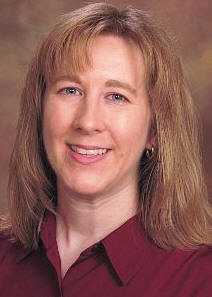 |
|
Great Lakes
Region
Recording
Audio 1
It was the
first of the year and bad weather was moving in as 14-year
veteran Kristin Danninger worked the radar approach position at Madison. A couple of VFR
flights had already returned to MSN due to decreasing visibility
when N6085M called in distress – a novice pilot stuck in the
clouds near Baraboo Dells
Airport.
N6085M:
Madison Approach, Cessna sixzero-eight-five mike… flew into
absolutely no visibility. I need your help getting outta here.
DANNINGER:
November six-zero-eight-five mike, can you climb VFR? N6085M:
I’m gonna climb…I can’t climb VFR. I’m in a zero visibility.
Knowing that a Cessna aircraft had flown VFR into Portage Airport
a little while before, Danninger suggested the aircraft head
eastbound.
“I still
have zero visibility at two thousand seven hundred,” responded
the pilot after descending a bit in hopes of catching a glimpse
of Portage.
“It’s not gonna happen.” “I would just suggest you continue
eastbound then,” advised Danninger in her comforting
Midwest
accent.
“Hopefully the conditions will improve.” With the
aircraft now headed towards MSN, where conditions were still
VFR, Danninger went ahead and asked the necessary questions in
order to assist the disoriented aircraft, learning that the
pilot not only had zero instrument training but had just
received his pilot’s license the day before.
|
Kristin Danninger
Madison, Wisc. (MSN) |
|
| |
|
|
Danninger calmly
made several suggestions in order to get the now panicking pilot safely
back on course and consistently above minimum altitude, making certain
to clarify the aircraft’s intentions throughout the situation to ensure
that both remained on the same page. A few minutes later, the pilot
received ground contact and Danninger successfully used her geographical
knowledge of the area to point out the interstate highway below that led
to the airport– a sight that brought tears to the eyes of the pilot.
With the runway
and approach lights set on high, Danninger oriented him for the best
runway and ensured he was comfortable before transferring him to the
tower. The tears were proof enough of the emotional situation that took
place on Jan. 1, 2009, as the pilot realized the seriousness of the
situation and the fact that it could have so easily ended in tragedy.
During what started out as a routine day for Danninger quickly turned
complex due to this series of unforeseeable events; however, the end
result was a safe and successful one thanks to her calm, patient and
professional demeanor throughout the entire 20 minutes, as well as her
undeniable knowledge of the area that enabled her to perform her job to
the very best of her ability.
The next day, the
pilot and his girlfriend drove back from Illinois to personally thank
Danninger for her help – an act of kindness that showed the appreciation
this controller undoubtedly deserved, though in no way expected for
something she would describe as simply her “job.”
Great Lakes
Region RVP Bryan Zilonis:
“Jan. 1, 2009
marks a day that will always remind us that routine can change to
complex in a matter of moments. Neither Kristin Danninger, a controller
at Madison Tower in
Wisconsin, nor the pilot that would later
desperately need her help could have foreseen the events that were about
to unfold.
“N6085M called in
distress with zero visibility and requested help to get back into VFR
conditions. Kristin's ability to quickly assess the situation and
provide assistance based upon previous pilot reports, in addition to
successfully using her knowledge of the geographic area to orient the
pilot, were ultimately the difference between heroics and tragedy. This
type of event has become a yearly reminder of how priceless local
geographic knowledge is to a Terminal Radar Controller.”
| |
|
|
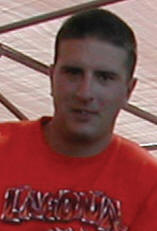 |
|
New England
Region
Recording
Audio 1
With
daylight waning, and an aircraft stuck amidst
rapidly-deteriorating weather conditions and mountainous
terrain, timing is everything. And on Oct. 9, 2009, it was up to
controllers Kevin Plante and Christopher Presley to help the
pilot of N5151L beat the clock.
N5151L’s
pilot had just found himself in a tricky situation as he was
quickly losing hundreds of feet of altitude while simultaneously
unable to maintain a heading or constant speed; the seriousness
of the situation becoming evident as controller Kevin Plante
kept his eyes peeled to radar.
The
aircraft initiated radio contact with Portland and advised it was VFR in IMC
conditions with a transponder that didn’t work. Knowing only the
last position of the aircraft as the mountainous area of
Fryeburg Fair, and receiving no radar return for this particular
aircraft, Plante quickly scanned his scope to locate a primary
radar return. Following the pilot’s description of “circling,”
he was then able to correlate the primary return to ultimately
locate the aircraft. Plante, aware that the pilot was suffering
disorientations among the clouds, maintained continuous dialog
with the pilot and made a suggestion for the pilot to land at
Portland
using a surveillance approach.
N5151L:
It’s definitely an optical illusion up here. PLANTE: Looks like
we kinda have you doing circles out there. I just need to figure
out a way to get you on a heading and have your wings level on
that heading.
N5151L:
I’m getting a little disoriented and losing altitude
substantially.
A rated
commercial pilot himself, Plante informed the pilot that there
were two other commercially-rated pilots sitting in the radar
room with to him in an effort to ease the shaken pilot.
Reassuring phrases such as “We’ll get you through this” and
“We’ll get you down no problem” were voiced to the pilot as he
worked to get himself oriented with the current surroundings.
During one
loss of altitude, the pilot broke out below the cloud deck and
was able to spot landmarks around the town of Windham. Controller Chris Presley, who had
already terminated his flight data training and handed off other
aircraft in order to assist Plante, immediately grabbed a road
map off the shelf to help his friend guide the pilot to
Portland. Using several interstate
highways, as well as pointing out lakes and various towns along
the way, Presley relayed the directions through Plante until the
runway approach lights were visible in the distance.
Through Plante’s
composure, patience and pilot experience, and Presley’s quick thinking
initiative and dedicated assistance, N5151L made it in right before the
big storm – a goal undoubtedly achieved through a team successfully
unifying towards a common goal. The skilled efforts of these two
controllers transformed a complex situation consisting of various risky
circumstances into one of a safe and happy ending.
|
|
Kevin Plante Portland, Maine (PWM) |
|
| |
|
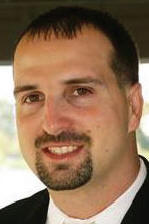 |
|
|
Christopher Presley Portland, Maine (PWM) |
|
| |
|
|
New England
Region RVP Mike Robicheau:
“The flight assist
that Kevin Plante and Chris Presley worked is the very essence of
teamwork – a quality that sits at the heart of everything our union
does. “On a day when time was of essence, these two NATCA members took
every discouraging circumstance into consideration to ultimately get
this aircraft on the ground. Sharing the load, they split up duties in
order to cover all aspects of the complex situation and calmly brought a
shaken, disoriented pilot to safety.” “This save is yet another example
of controller/pilot experience within the radar room coming into play to
save the day.”
| |
|
|
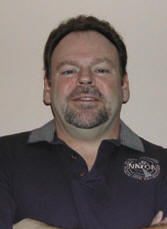 |
|
Northwest
Mountain
Region
Recording
Audio 1
One of the
trends we have seen in the six years of our NATCA Archie League
Medal of Safety Awards program has been the prevalence of
winning flight assists that involved a controller who also had
some level of flying experience. Whether a few lessons or many
years in the cockpit, those controllers have added something
very valuable to their array of skills that come in handy during
an emergency situation in their airspace.
The latest
chapter on this was written on March 29, 2009, when Marcus
Plessner saw the misfortune of encountering engine trouble with
his Piper Aztec above western Montana
turn into great fortune when he flew into Sector 6 at Salt Lake Center, staffed at that moment by 23-year
veteran controller and accomplished pilot Troy Decker.
“Yes sir,
we’re having some problems with our number two engine, like to
divert to nearest airport. Request vectors.” Plessner’s calm
demeanor was matched by Decker, who quickly came up with a plan
for the aircraft. The challenges were evident; a rough running
engine and the plane’s location in a mountainous area where
radar coverage is sketchy below 13,000 feet.
DECKER:
Four-zero-four Charlie hotel, Anaconda Airport
is just off your eleven o’clock and four miles. If you need information
on it I can get you that or if you can make
Butte.
Butte is about …
just picked you up on radar sir, radar contact.
|
Troy Decker
Salt Lake Center (ZLC) |
|
| |
|
|
One five miles
northwest of (inaudible) approximately Butte
Airport
eleven o’clock two-zero miles. Plessner accepted the idea of Butte and began a descent to get an approach.
Decker gave him a
detailed weather report and it quickly became apparent that
Butte
was perhaps not the best option as the weather was reported below
minimums in the area. At that point, the situation with Plessner’s
engine worsened and he formally declared an emergency. Decker quickly
provided other options as landing alternatives, starting with Anaconda,
then Dillon where the weather seemed a bit better. “Troy
does an excellent job relaying information so the pilot could make an
informed decision as to which airport he should choose,” Salt Lake
Center Facility Representative Doug Pincock said.
As Plessner’s
number two engine went out completely, Decker gave him another complete
weather and situation briefing and instructed him to descend and
maintain an altitude of 12,000 feet. Decker threw out Missoula as another
option.
N404CH: Yeah.
How’s Missoula’s
weather? Uh, we got smoke coming off our number two right now, four
Charlie hotel.
DECKER: OK, uh,
Missoula
is two-oneone- seven special. Winds three-two-zero at one-zero.
Visibility one and one quarter. Light snow. Mist. Ceiling seven hundred
overcast. Temperature one. Dew point zero. Altimeter two niner six niner.
N404CH: Alright, let’s go for
Missoula.
Our number two is
on fire at this time for four Charlie hotel. Decker told Plessner that
Anaconda
Airport was actually right
behind him, albeit plagued by more weather problems. Plessner said he
wanted it and Decker told him it was a VOR approach. But just as quickly
as that option came, it went with the realization that Butte was, in fact, going to be the best final
option. Decker provided updated information and recommended an alternate
approach to expedite the landing.
DECKER: November
four-zero-four Charlie hotel, alright sir. Anything else I can get for
you right now? No NOTAMS affecting you. Any runway you want, of course.
It’s just the weather we’re looking at sir. N404CH: Alright, sounds
good. Understand it is a weather issue. We are VOR Runway One-Five and
we do request crash fire and rescue assistance when we get there please.
DECKER: They’re on
the way sir. N404CH: Alright, Salt Lake Center Aztec four-zero-four
charlie hotel we are barely legal VFR. We got the airport. We are in the
ILS to Runway One-Five at this time. Decker then provided one last
instruction, to give them a call at the center when things settled down.
A safe landing ensued.
“Troy
is an accomplished pilot himself and IFR rated and that experience
proved invaluable,” Pincock said. “He was able to anticipate the pilot’s
needs and used personal knowledge of the area to help produce a
favorable outcome to an otherwise dire situation.”
Northwest
Mountain
Region RVP Jim Ullmann:
“Air traffic
controllers of the NW Mountain Region are well versed working aircraft
in high terrain, and during the winter months there is a good chance
that icing and winter IFR weather are the norm. “The outstanding save
ZLC controller Troy Decker was involved in not only had mountainous
terrain and wintry weather but also an aircraft engine fire. “Troy
Decker again proves that when an aircraft is in trouble, air traffic
controllers are expected to remain calm and professional at all times.
The pilots expect this, and we expect it of ourselves.
“I commend
Troy
for his outstanding actions, and I commend all the hard-working NATCA
air traffic controllers who perform in an exceptional manner day in and
day out.”
| |
|
|
|
 |
 |
|
Southern Region
Recording
Audio 1
Recording Audio 2
“I’ve
gotta’ declare an emergency. My pilot’s…unconscious. I need help
up here.” These stirring words hung heavy in the air as Doug
White, passenger of the King Air aircraft, reached out for help
– help from anyone that could provide it on this busy Easter
Sunday.
“My
pilot’s deceased…I need help.” While his wife and two daughters
looked on in shock, White took over the cockpit as various Miami controllers began to
lighten the load of Nathan Henkels and Lisa Grimm who
immediately made moves to assist the troubled passenger.
Though a
private pilot, White had never flown a larger, two-engine King
Air and was now in a life-threatening situation as the plane hit
5,000 feet and continued climbing. As Jessica Anaya stepped in
to coordinate the rerouting of all aircraft in this high traffic
area of Southern Florida, Grimm worked to calmly explain the
specifics of the aircraft to White as he frantically sought to
turn off the autopilot.
“Number
five delta whiskey, disengage the autopilot. We’re gonna have
you hand fly the plane,” she instructed. “Hold the yoke level
and disengage the autopilot.” “Alright, I disengaged it,” stated
White, surprisingly composed as he was forced to take action in
order to stop the climb. “I’m flyin’ the airplane by hand.” And,
in his typical light-hearted demeanor that seems to find humor
in any situation, followed
it up with a request for Grimm to find the longest, widest
runway she could.
“You doin’
alright there descending?” Grimm asked a few minutes later, as
she did repeatedly throughout the event. “I felt as long as he
had some reassurance, he had enough skills to successfully
manipulate the controls and bring the plane down,” recalls Grimm
of her actions that day.
“Oh, we’re
havin’ a hoot, niner delta whiskey,” White responded in his
thick southern drawl. He and his family lay in the hands of a
team that had quickly formed an assembly line formation in order
to successfully alternate between transferring control on the
radio channel, advising the passenger and issuing control
instructions to other aircraft. Through the pilot experience so
patiently displayed by Grimm and the hard work of Henkels and
Anaya, White was able to get the plane in the appropriate
position to steer towards
Fort Myers Airport
where Dan Favio, Brian Norton and Carey Meadows were waiting to
takeover.
It was at this
point that Favio called up good friend and veteran pilot Kari Sorenson
of Danbury,
Conn., for help in talking White
down. Also a flight instructor, Sorenson was able to relay important
details via cell phone regarding the positions of controls, switches,
and how to configure the King Air for landing. Favio and Norton, set up
on a single scope and a separated frequency to allow for complete focus,
received the instructions from Sorenson which they carefully echoed to
White. With a successful touchdown finally completed, the two handed the
aircraft off to Meadows at ground control where he proceeded to assist
White with shutdown instructions.
|
Jessica Anaya
Miami Center (ZMA) |
Lisa Grimm
Miami Center (ZMA) |
|
| |
|
|
 |
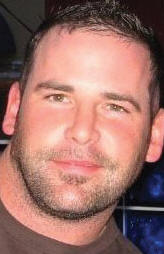 |
|
Nathan Henkels
Miami Center (ZMA) |
Dan Favio
Fort Myers, Fla. (RSW) |
|
| |
|
|
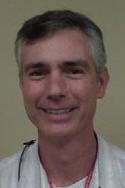 |
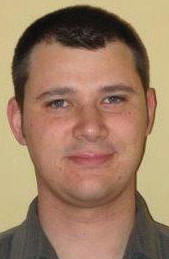 |
|
Brian Norton
Fort Myers, Fla. (RSW) |
Carey Meadows
Fort Myers, Fla. (RSW) |
|
| |
|
|
|
With one
unfortunate and unpreventable death, came the incredible saving of four
others thanks to those who worked the skies that Easter Sunday. The
teamwork was unmistakable as the experience and calm composure of the
controllers in Miami joined forces with
the quick-thinking skills of the Fort Myers team. Enhanced by the remarkable
courage displayed by Doug White through these adverse circumstances, the
ATC system worked together from tower to center, from pilot to
passenger, to bring a successful end to this traumatic event that could
have easily gone from bad to worse.
“The husbands and
the wives of air traffic controllers have no idea what their spouses do
for a living,” saidWhite after the fact. “When something good happens,
air traffic controllers don’t get the high-five and the ‘attaboys.’ I’m
going to give them the ‘attaboy.’”
Southern Region
RVP Victor Santore:
“This event
immediately stands out as one of our greatest demonstrations of teamwork
in the face of terribly unfortunate odds. This group of capable
controllers came together under immense pressure to resolve a situation
that cannot be found in any type of ATC manual; an amazing save that is
vivid proof that a "B" pay scale has no place in our profession. The expertise of
these six NATCA members shone brightly on April 12 as they used every
resource and capability available to them, portraying not only the
necessary skill, but the highest professional standards that we set for
ourselves each and every day. I am proud to
present Lisa, Nate, Jessica, Dan, Brian and Carey with this award, as
performing their everyday duties on this particular Sunday went on to
make them unforgettable heroes in the eyes of the White family.”
| |
|
|
 |
|
Southwest Region
Recording
Audio 1
“Sometimes
in life, we don’t always get to thank our benefactors,” wrote
pilot Scott Spencer in a letter to D10 TRACON. Thanks to the
actions of Douglas Wynkoop and Natasha Hodge, Scott Spencer was
able to do just this. One a VRA developmental, one a 27-year
veteran; both proved skill and resolve beyond measure with the
terrific work they displayed on Dec. 7, 2009 when faced with a
confused and disoriented experimental aircraft in distress.
Natasha
Hodge was working her certification ride on this particular
evening when Spencer, on an instrument flight plan, checked onto
frequency inbound to
Fort Worth
Meacham
Airport. Hodge watched carefully as
the aircraft went from an assigned altitude of 3,000 on a
heading of 315, to 1,700 feet on a heading of 065 in just 24
seconds.
Witnessing
the drastic flight loops taking place in front of her, she again
calmly instructed Spencer to the assigned altitude, but this
time, the aircraft continued to climb to as high as 5,200 feet.
HODGE: Are you having any difficulties?
N300SX: I
had a little problem with my, uh, GPS on the approach. Now with
the specific problem defined, Hodge assigned headings for an ILS
approach. The cloud ceiling of 600 feet overcast and the
visibility of half a mile precluded anything but an instrument
approach. Once again, however, she was forced to redirect the
aircraft due to the pilot’s series of erratic turns and
difficulty tracking the localizer.
“You’re
way below the glide scope… the localizer two thousand five
hundred down there at Cowtown,” she explained to the pilot.
“Climb and maintain three thousand. Cancel approach clearance.
Fly present heading.” Persistent to try one more time, Hodge
issued no-gyro vectors to final.
“We’re…
we’re in trouble. It’s, uh, losin’ power,” responded Spencer,
now noticeably worried about the situation he had found himself
in. “Jet Speed thirty-five, turn left heading three-six-zero
immediately,” Hodge promptly advised over frequency to a nearby
aircraft as she continued to work the sector in addition to
assisting the experimental aircraft.
Witnessing
the extensive length of time Hodge had spent thus far assisting
the aircraft and taking into account the rapidly- intensifying
situation, Douglas Wynkoop stepped in to take over the
situation. He immediately redirected other aircraft in
the area while, at the same time, turning the distressed
aircraft away from an antennae which now lay in its path of
descent. The aircraft was able to regain power and, after
witnessing the previous three missed approaches and knowing
there was less than 40 minutes of fuel with no airports
reporting VFR conditions within the limit of flying time,
Wynkoop suggested an ASR approach into Navy Fort Worth after
exhausting all other options.
|
Natasha Hodge
Dallas TRACON (D10) |
|
| |
|
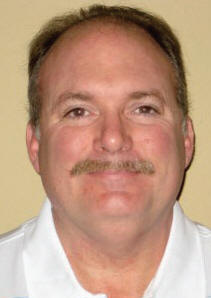 |
|
Douglas Wynkoop
Dallas TRACON (D10) |
|
| |
|
|
With the excellent
assistance of the GCA controllers at Navy Fort Worth, the ASR approach
and landing was successful. During his communication
throughout the event, Wynkoop made sure he was clear on the pilot’s
intentions while patiently offering up multiple landing options for the
aircraft. He professionally alerted the control tower regarding all
emergency information, including pilot, aircraft and approach details,
to ultimately ensure the aircraft’s safety upon descent.
Wynkoop not only
stayed in tune with all aspects of the situation at hand, both on
frequency and behind the scenes, but this seasoned veteran remained
confident in his developmental for the majority of the
emergency. He allowed her to excel at her job and prove herself
capable of handling extreme pressure with composure and professionalism
before then taking over.
Combined, these
two members worked the aircraft for 51 minutes – 30 minutes of which
consisted of critical circumstances requiring precise instruction— and
demonstrated teamwork and commitment at its finest during the entire
ordeal.
Southwest Region
RVP Tim Smith:
“The event that
took place on Dec. 7 is an example of teamwork and commitment at its
best as Doug and Natasha worked together to maintain control of a
rapidly intensifying situation. Taking into consideration the current
circumstances and exploring all possible options, they jointly ensured a
safe landing for this one very-disoriented experimental aircraft.
“Their actions not
only demonstrated the crucial role our veteran controllers play in the
safety of our aviation system each and every day, but prove the
essential value our newer controllers have on its future. It is men like
Doug we hate to see retire and women like Natasha that we are eager to
see fill our facilities. We are proud to call them NATCA members and, on
behalf of the union family and the pilots they tend to, thank them for a
job well done!”
| |
|
|
 |
|
Western Pacific Region
Recording
Audio 1
For
22-year veteran Southern California
air traffic controller Ron Chappell, who knows pretty much
everything there is to know about the ultra complex and
intricately choreographed airspace around LAX, nothing goes
unnoticed. That is especially true for a tiny blip of a primary
radar target on Chappell’s scope at Southern California TRACON
(SCT) that had errantly wandered unannounced and unmarked into
the delicate dance of his perfectly crafted final approach lined
up for Runway 25 Left.
Crystal
clear days in the Los Angeles Basin
provide a recipe for a traffic mix that includes general
aviation aircraft flying without a transponder, along with high
volume commercial aircraft. On this particular sunny day in
June, Chappell was strapped into the Downey sector position
(south finals into LAX).
While
working, Chappell observed a primary- only target converging
with SkyWest Airlines Flight 6522, a
Bombardier Canadair regional jet, who was inbound on the
25-Left ILS. Rarely do general aviation aircraft penetrate the
Los Angeles Class Bravo airspace. But on this day, the Class B
was penetrated by an aircraft (it turned out to be a Navion) who
was simply not squawking a discreet code which would make him
visible to ATC.
|
|
Ron Chappell Southern California TRACON
(SCT) |
|
| |
|
|
That’s when
Chappell, an experienced controller who knows how to pick up a small
primary target and identify it as an aircraft and not a vehicle, sprang
into quick action. “SkyWest sixty-five twenty-two, traffic eleven
o’clock and two miles westbound primary target, altitude unknown.”
The following
transcript shows just how close the two aircraft came and the level of
great communications needed to ensure a safe outcome.
SKW6522: He’s in
sight, sixty-five twentytwo … uh … I can’t tell the type yet. I’ll tell
ya in a second.
CHAPPELL: OK, is
he, um, above you or below you?
SKW6522: Alright,
uh, yeah, he’s, uh, pretty clueless. He’s a one, well, no, it’s a Navion
and he was gonna run into us. We had to descend, sorry sir.
CHAPPELL: SkyWest
sixty-five twenty-two, glad I said something. I don’t have an altitude
readout on him.
SKW6522: Well, um,
we don’t have him on TCAS at all, so I don’t think he has a transponder.
CHAPPELL: SkyWest
sixty-five twenty-two, reduce speed to two-one-zero.
SKW6522: Bring
down on the speed now sir, sixty-five twenty-two.
SKW6522: Just to
verify the speed is twoten, for sixty-five twenty-two.
CHAPPELL: SkyWest
sixty-five twenty-two affirmative.
CHAPPELL: SkyWest
sixty-five twenty-two, I just have to ask reference the paperwork, he
was around eight thousand five hundred or so, somewhere about the time
you had to descend?
SKW6522: Yeah,
eight thousand or eight thousand five hundred, and um, it was definitely
a Navion, um white. That’s about all I can tell you. It looked like
maybe a brown top and, yeah, we had to descend. He had no TCAS. We
didn’t get a resolution or anything but we had to descend to avoid him.
CHAPPELL: SkyWest
sixty-five twenty-two, we have a radar track on him and we will follow
him as long as we can keep radar on him, and file the appropriate
paperwork on him.
SKW6522: I just
want to say we really appreciate the fact that you said something, cause
we didn’t see him until you said something.
CHAPPELL: You’re
welcome. Glad to help.
Chappell began his
FAA career in 1988 at Burbank Tower
and moved over to the old L.A. TRACON in 1992. In 1994, the facility was
consolidated into SCT and Chappell is now in his 16th year there. This
honor marks Chappell’s second Archie League award. He and Al Hurst won
the first Western Pacific Archie League award for a save in 2004
involving nearly the exact set of circumstances as this 2009 event: An
unidentified VFR aircraft posing a traffic and safety hazard to a
SkyWest flight inbound to LAX. Veteran SCT controller Ron Geyer, who
nominated Chappell for the 2009 save, said of the quick thinking, “As
you can clearly hear on the tape, Ron’s awareness prevented a
collision.”
Western Pacific
Region RVP Ham Ghaffari:
“On Aug. 31, 1986,
an Aeromexico DC-9 collided with a Piper Archer over
Cerritos,
Calif. The NTSB found that the
Piper had deviated into the LAX terminal control area. The aircraft was
not equipped with a Mode C transponder and wasn’t in contact with ATC.
The accident was largely responsible for the FAA requiring that all
commercial aircraft be equipped with traffic alert and collision
avoidance systems and that light aircraft operating in dense airspaces
be equipped with “Mode C” transponders that could report a
three-dimensional position. “Fast forward to June 28, 2009: veteran SCT
controller Ron Chappell, working the Downey sector at SCT, observed a
“primary only” target without a transponder converging towards a SkyWest
regional jet. Ron took action to issue traffic to the SkyWest jet not
knowing the altitude of the primary target and making sure that it
wasn’t just a truck on Interstate 405.
“The lesson here:
advances in automation, like TCAS software, are important but will never
replace an experienced controller. “I know that this was just another
routine day for Ron, but I am very proud of what he did to ensure the
safety of the passengers aboard the SkyWest flight and the errant small
aircraft.”
|

